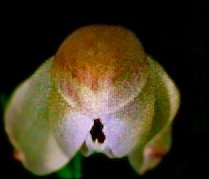Summary and Analysis of the Wizard of Oz, presented by Fort Dorchester High School
There is a young girl, named Dorothy, who lives on a farm in Kansas. A big tornado sweeps through her home, taking the house that she’s in off of the land and into the sky, miles and miles away from where it was picked up. Dorothy’s house stays in one piece and ends up landing in a place called Munchkin town right on top of the “wicked witch of the east”. The town is inhabited by little “munchkins”, and they graciously thank Dorothy for helping them get rid of the witch. The witch’s sister, the “wicked witch of the west”, comes to take her sister’s magical ruby shoes and avenge her sister’s death. An ironic situation arises when Dorothy herself puts the ruby shoes on, binding herself to them, stopping the remaining wicked witch from getting anything she wants. Dorothy must go to the Wizard of Oz to get home, and she meets some new friends on her way. We all know the plot.
When I bought the tickets for the play, I thought it would be pretty similar to the movie. I set my standards too high, expecting the acting, singing, set, and script to be up to par with the film. I guess that was a little silly of me to do, since high school plays don’t usually match in quality with feature films. I was deeply disappointed in all of the said areas simply because I know that our school has the potential to put on a better show.
First off, I have to say that I was astonished that there was no singing. Zip. The times that it was attempted, the audience received an earful of flat chant that made us want to stop them from going off to see the wizard. But it’s fine, we didn’t have to stop them ourselves. The guy in charge of sound control did it for us.
That poor Toto. I heard that half of the time spent on getting ready for the play was used in casting for the perfect dog. Too bad the audience couldn’t tell how much the school liked the dog when he’d yelp in Dorothy’s arms or get pulled by the leash attached to her wrist that was reaching for her boquet of flowers. The owner was furious, and I’m sure Dorothy was, too. Toto could carry his voice louder than she could with hers.
Munchkin town was thoroughly disappointing. There was nothing aesthetic, or even stimulating, about the set. The munchkins were adorable while they tripped over their hideous flimsy mushroom field that symbolized their whole city. I think that someone in the set department got “munchkin” and “smurf” mixed up. And where did the two other evil characters come from, Hocus and Pocus, or whatever? Their purposeless lines weren’t even funny, and neither was the ballerina tutu. If I was any one of the many, many children attending that show, I would have been very confused by the end of the play.
There was one thing that I liked about this play. When the play started to get really boring and limp, there was a little mishap on the set. I was sitting there with my cheekbone on my elbow, slowly dozing off, when all of the sudden I see the most phenomenal thing that ever happened in all of the school plays that I’ve gone to see. The gates of Oz start to crumble, and it was an event just as delectable to me as the crumbling walls of Jericho were to the chosen people. Finally, after all of the bad and awkward acting from the main characters, there was something that connected them to the audience. Everybody, cast, crew, audience, was laughing. And they played it off so good, too. The Wizard of Oz himself made a reference to the set problem, blaming Dorothy for coming down and tearing up his city. The cover-up was so good that there were some older children who were asking their parents why everybody had started laughing.





